![]()
|
|
|
Stoke-on-Trent - Potworks of the week |
Bell
Works, Broad Street & Bethesda Street, Hanley
|
|
The
Ridgway family of Potters and their factory ownership
- click for more information on each person -

Hanley potters
- to the left is Clough Street, to the right is Broad Street
photo: July
1933
reproduced under licence - copyright © English Heritage/NMR Aerofilms
Collection
Purple: Bell Works
Blue: Phoenix Works of Clementson
Orange:
Broad Street Works
Green: The White House

This 1933 photo shows the location the Bell Works on the corner of Bethesda Street and Broad Street
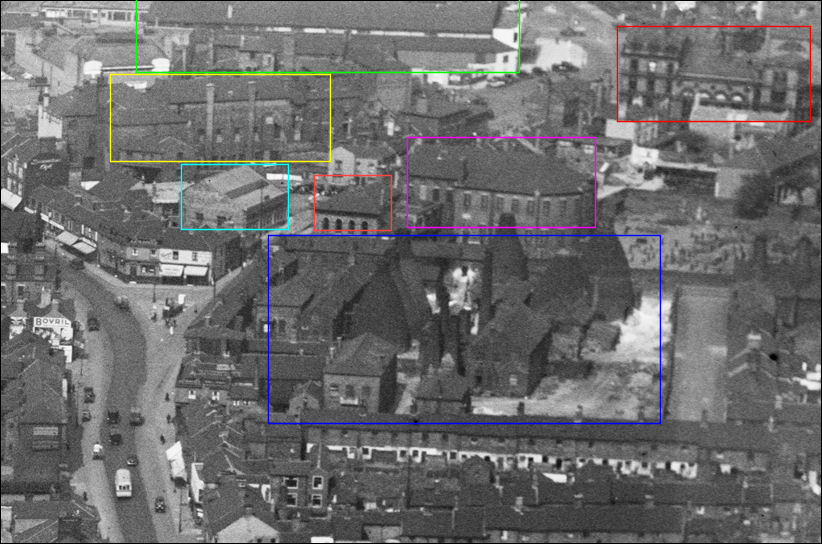
Light
Green: Albion Street skating rink and cinema - built on the site of
Dimmocks Pottery Works
Red: Hanley Town Hall (former Queen's Hotel) and Victoria Hall
Yellow: rear of the Library and Museum on Pall Mall
Light Blue: Peppers Garage
Orange: Potteries Waterboard offices
Purple: Bethesda Methodist Chapel
Blue: Bell Works
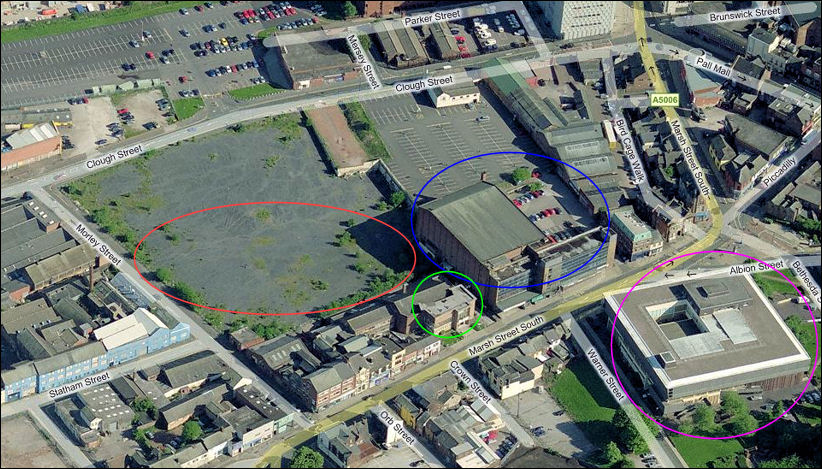
Bing Maps
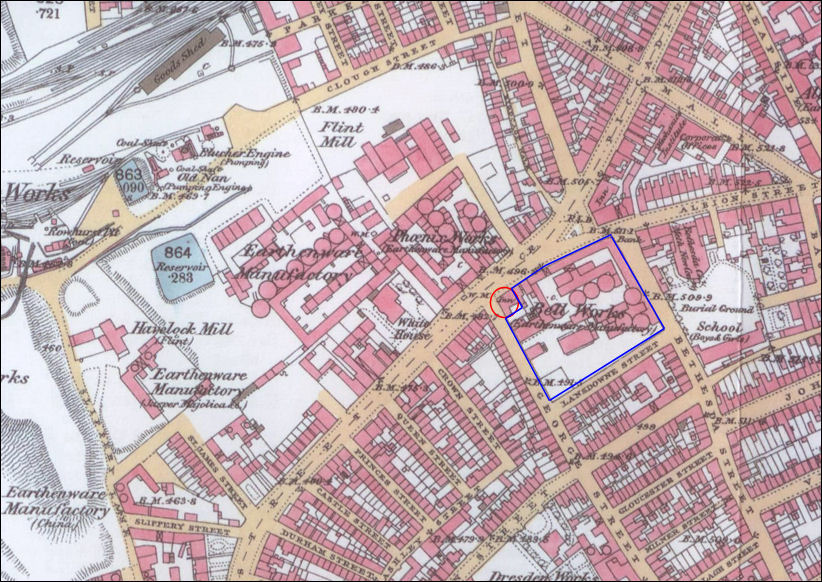
1877 map showing The Bell pottery works
- the red circle is the Bell Public House
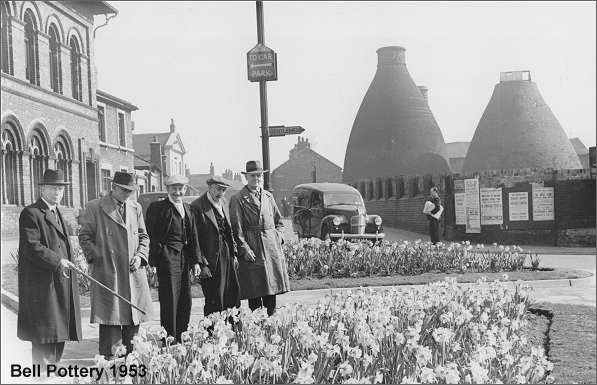
The Bell Pottery, Bethesda
Street, Hanley in 1953
this view is looking along
Bethesda Street
the kilns of the Bell Pottery are
being demolished to make way for
a new Museum and Art Gallery which opened in 1956
- to the left is part of a group of buildings
which were part of the former
Staffordshire Potteries Water Board, and in the more distant left
is the Sunday School of the Bethesda Methodist Chapel
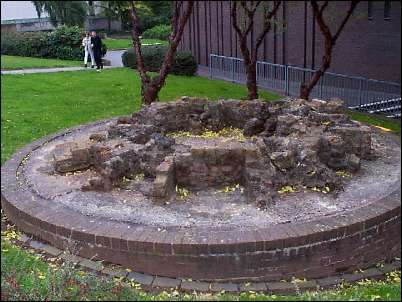
In front of the museum the base of one of seven bottle kilns of the Bell Works
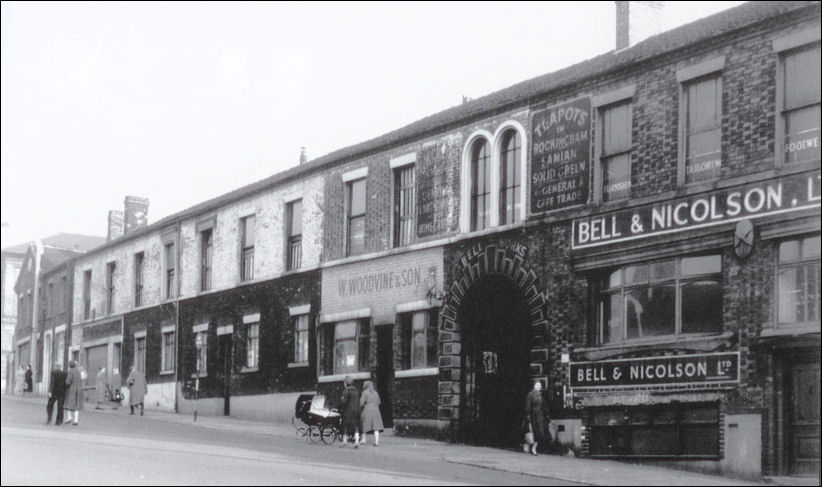
the
frontage of the Bell Works on Broad Street, Hanley
The photo shows a long two-storied front to Broad Street with a pediment near
the corner with Bethesda Street
photo: © W. T. Vickers - used with kind permission
- W. T. Vickers -
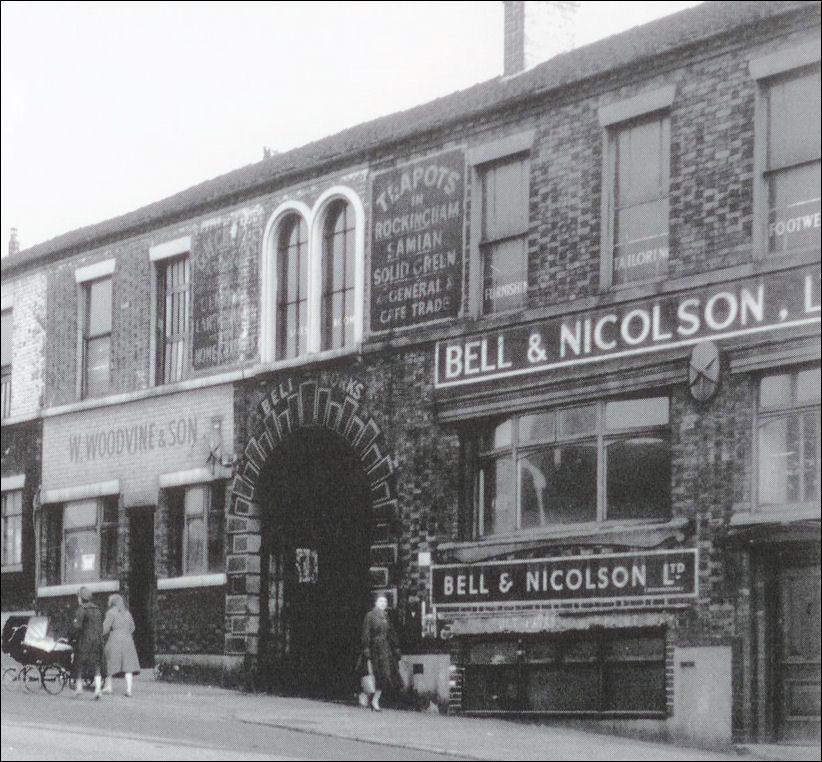
either
side of the window above the entrance are signs for G. M. Creyke & Sons
-
General Earthenware 'Teapots in Rockingham, Samian, Solid Green'
photo: © W. T. Vickers - used with kind permission
- W. T. Vickers -
| G. M. Creyke and Sons
Limited
the mark of G. M. Creyke & Sons
Creyke Patent earthenware teapot and cover; pointed polygonal shaped body, decorated all-over with a pattern of paisleys, leaves and flowers in a green, blue, yellow and pink pattern; distinctive shape with a tiny metal spout.
Creyke earthenware octagonal yellow glazed teapot and cover with black handle and knob factory : G.M. Creyke and Sons at the Bell Works, Hanley on
display at Norwich Castle |

|
14 G. M. Creyke & Sons, Ltd. 15 Wulstan Pottery, Ltd. 16 Geo. L. Ashworth & Bros., Ltd. |
map from 1947 Pottery Gazette & Glass Trade Review
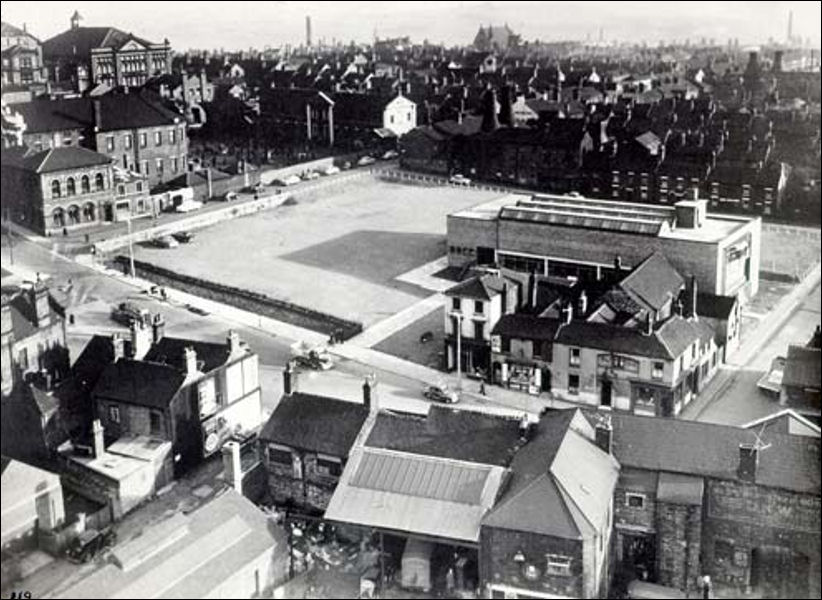
The
City Museum & Art Gallery on the site of the Bell Pottery Works - on the
right bottom corner is the Bell Public House
photo: 1957
©
The Potteries Museum & Art Gallery - Staffordshire Past Track
Staffordshire
Past Track
| The City
Museum & Art Gallery was officially opened by Alderman Horace
Barks on the 13th October 1956. Built on the site of the Bell Pottery
works, this image shows the area before additions were made to the
building in the early 1980’s.
On the corner of Broad Street and George Street, now called Warner Street, is the Bell public house. In the top left of the picture is the old water rates office, Bethesda Chapel, Bethesda Sunday school and the Victoria Hall. These buildings stand today outside the main entrance to The Potteries Museum and Art Gallery. |

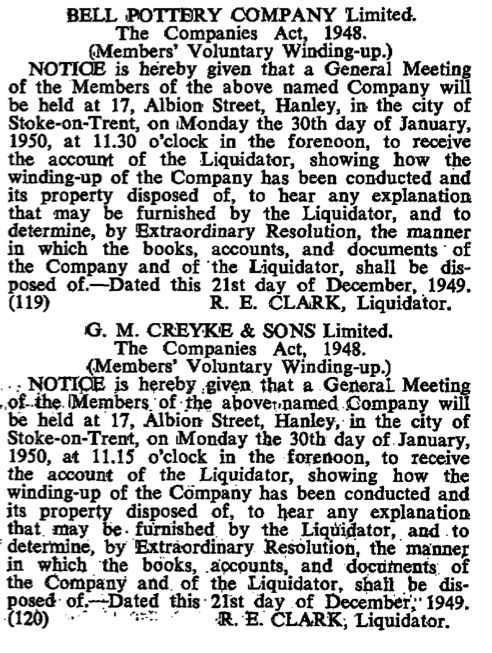
|
Messrs. Clementson Brothers, The potter's art being undeniably one of the
most ancient, as well as one of the most useful crafts the world knows, our readers require
little or no apology from us for introducing a series of articles on this subject in the present work, and among the many important houses devoted to the manufacture
of earthenware in Hanley, the firm of Clementson Brothers, of the
Phoenix and Bell Works, Broad Street, must be cited an a leading example. |
from.... A
descriptive account of The Potteries (illustrated) |